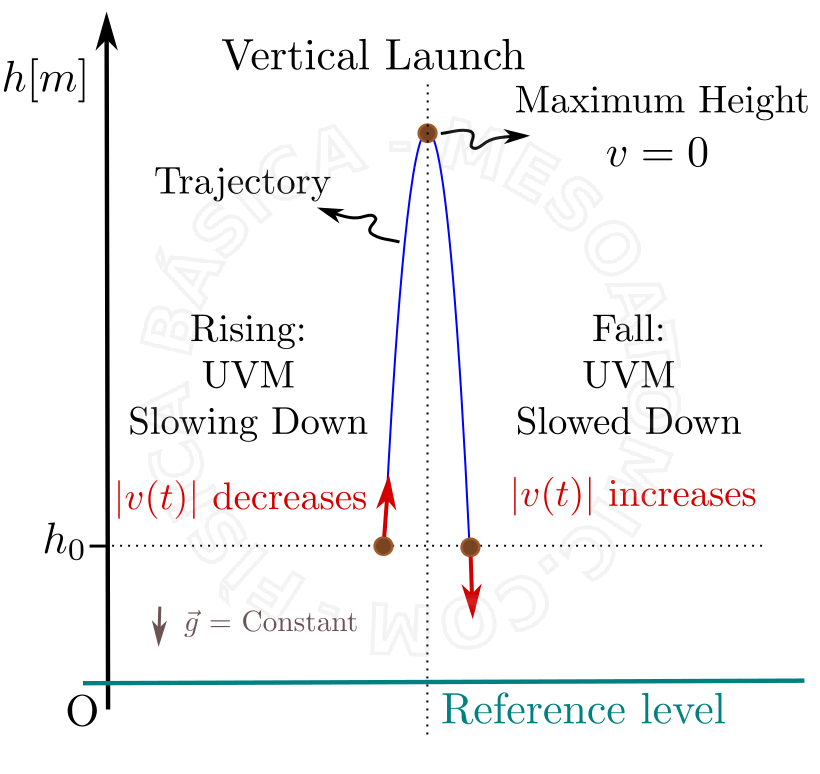- Mechanics
- /
- Kinematics
- /
- Vertical launch
Vertical launch is the rectilinear and vertical motion that an object describes when it is only under the gravitational force action and where the air resistance is neglected.
A particular case of vertical launch is the free fall, which is the movement of an abandoned object from a certain height.
Consider the vertical launch of an object in a tower. See how the trajectory changes with different modules and directions for the initial velocity. In equal time intervals, the position of the object is marked in the animation, to demarcate the route, as in a strobe image.
Free fall
It is the straight and vertical motion of an object when it is only under the action of the gravitational force, without taking into account air resistance. The Earth's gravitational pull attracts objects and has the following characteristics:
- Direction
- Vertical, passing through the Earth's center of gravity and pointing downwards to the Earth's center.
- Module
- For motions close to the Earth's surface, the gravity acceleration modulus changes slightly from place to place, but, on average, it is approximately \(9.81 m/s^2 \). Sometimes, is convenient to round to \(10 m/s^2 \) to simplify the calculations.
Equations of vertical launch

The vertical launch is a uniformly varied motion, and considering the axes as shown in the figure above, the equations that will describe the movement are: $$ \left \{ \begin{array}{a} h(t) = h_0 + v_0 t - \frac{1}{2} g t^2\\ v(t) = v_0 - gt \\ v^2 = {v_0}^2 - 2 g \Delta h \end{array} \right . $$ where \(h(t)\) and \(v(t)\) is the height and the speed of the object in the time \(t\), \(h_0\) is the initial height, \(v_0\) initial speed and \(\Delta h\) is a height variation.
If the initial and final height are the same, then:
- The time the object takes to rise to the maximum height is equal to the time to descent to the initial height.
- The speed modulus when the object is rising, at a specific height, is equal to the speed's modulus when the object is descending.
